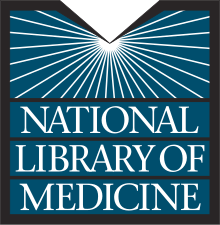Visible Human Project
The Visible Human Project (VHP) is a project with the aim of obtaining detailed data for the visualization of human anatomy on the basis of cross-sections of complete human bodies . For this purpose, the bodies of two donors were frozen and cut into thin slices, which were photographed and digitized . The project belongs to the American National Library of Medicine (NLM) and is directed by Michael J. Ackerman. Planning began in 1989. The male body data were published in November 1994 and the female body data in November 1995. The project is currently being documented at the National Museum of Health and Medicine in Washington, DC .
Data acquisition
Origin of the body
For the male body, Joseph Paul Jernigan agreed to donate the body for scientific purposes. Jernigan was 39 years old and one in Texas convicted murderer who on August 5, 1993 by lethal injection executed was. He declared his willingness to donate at the request of the prison pastor, but without actually knowing that it would be used for the Visible Human Project. Some ethical concerns have been raised in this regard.
The donor of the female body, a 59-year-old woman, remained anonymous. She has been described in the press as a Maryland housewife who died of a heart attack . According to this information, the suggestion to use her body for the project came from her husband.
Technical aspects
The male body was frozen and dissected into 1871 axial sections at a one-millimeter interval . These were photographed , the images were then digitized . The total data volume of all images, each with a resolution of 2048 × 1216 pixels in 24-bit color depth , is 15 gigabytes. In August 2000, data with a higher resolution was made available. For this purpose, photos of partial sections of the body slices were digitized with a resolution of 4096 × 2700 pixels and put together accordingly. This results in a data volume of 65 gigabytes. The female body was cut at an interval of 0.33 millimeters, resulting in 5189 cuts and 40 gigabytes of data.
In addition, further images of the bodies in different planes were obtained by means of computed tomography in an interval of one millimeter and magnetic resonance tomography in an interval of four millimeters. All work was done at the University of Colorado Health Sciences Center .
Problems and Discoveries
The brain of the male body swelled slightly from the freezing process. Parts of his inner ears were lost during the cutting process. Nerves can hardly be distinguished from fatty tissue in the sections . Small blood vessels have collapsed during the freezing process and therefore do not show their natural structure. The donor also had only one testicle . The sexual organs of the woman are due to their age not representative of a young woman.
By examining the data, researchers at Columbia University found various errors in anatomy textbooks, such as the shape of a muscle in the pelvic region and the location of the urinary bladder and prostate .
Further development
Licensing and previous uses
The data can be purchased in full on magnetic tapes . The download over the Internet is free. However, you have to state the intended use and sign a license agreement that grants the NLM the right to use and modify applications resulting from the use. The NLM also has the right to terminate the agreement at any time. The data is currently used by around 2,000 licensees in around 50 countries.
Various projects are trying to make the raw data better usable for educational purposes, in particular through a three-dimensional model of the human body. In this the organs are designated, can be viewed and animated from all sides and individually removed from the model. One application with this functionality is the commercially available VOXEL-MAN 3D-Navigator program developed at the University of Hamburg . The NLM oversees the open source project Insight Segmentation and Registration Toolkit . The book Body Voyage by Alexander Tsiaras and the accompanying CD also use the data from the project. Further applications deal with virtual radiography and virtual surgery for the simulation of medical techniques.
Similar projects
The Chinese Visible Human Project published corresponding data from Chinese body donors in October 2002 and February 2003, respectively. According to the project, these are free of physical illnesses. The representation of the blood vessels was also better. Analogous to this, there is also data from a Visible Korean Human Project.
literature
- MJ Ackerman, VM Spitzer, AL Scherzinger, DG Whitlock: The Visible Human Data Set: An Image Resource For Anatomical Visualization. In: Medinfo. 8/1995. IOS Press, pp. 1195-1198
- KH Höhne et al .: VOXEL-MAN 3D navigator: internal organs. Topographical, systematic and radiological anatomy. Springer Electronic Media, Heidelberg 2003 (DVD-ROM, ISBN 978-3-540-40069-1 )
Web links
- The National Library of Medicine's Visible Human Project Website of the project (English)
- AnatQuest - Anatomic Images Online (English)


